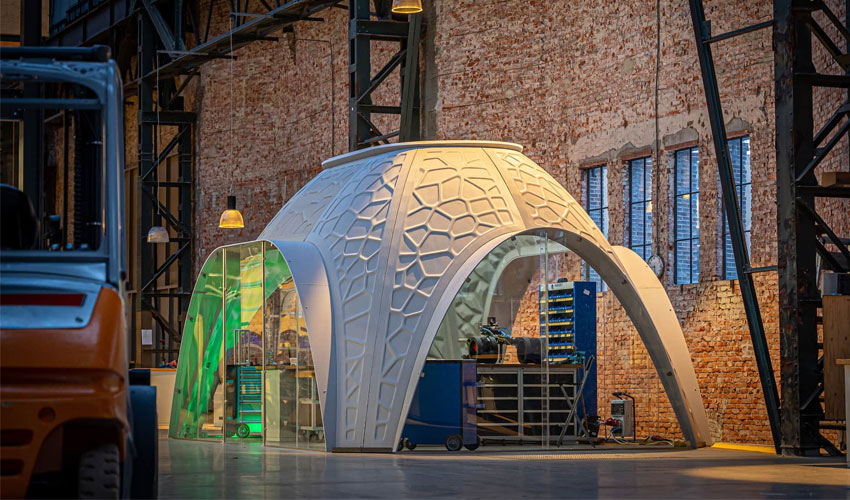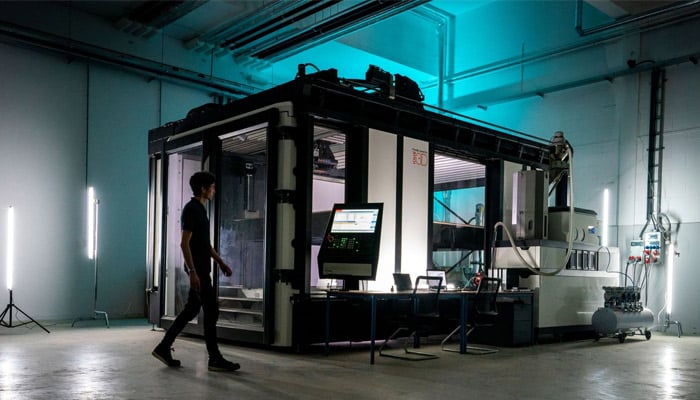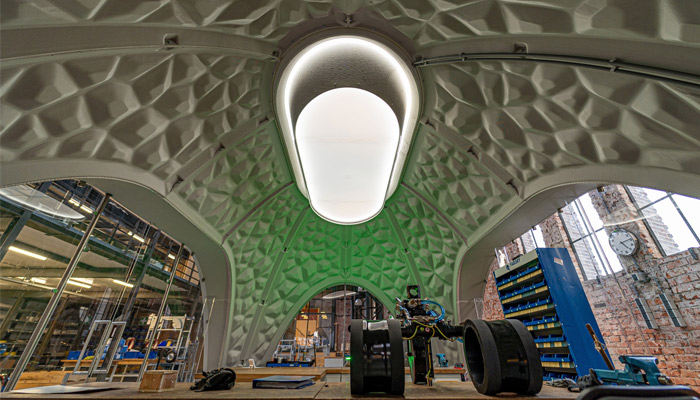This 3D Printed Pavilion was Made from Recycled PET

In the Netherlands, additive manufacturing has once again proven its worth in the construction sector: the Royal3D printing service has created a sort of shelter for a modular 3D printed workspace. And this time, it is not traditional concrete that was used but PET, the famous plastic from which our water bottles and food packaging are made. This shelter, called R-IGLO, would have been designed on the CFAM Prime machine from the manufacturer CEAD, a specialist in continuous composite 3D printing .
CEAD is a Dutch manufacturer that focuses on large format composite additive manufacturing, boasting an XXL machine capable of designing parts up to 4 x 2 x 1.5 meters. This extrudes all kinds of polymers in the form of granules and therefore offers the printing of continuous fibre composites. As part of the construction of R-IGLO, recycled PET was chosen by the Royal3D printing service, like this first 3D printed bridge in Rotterdam , also made with a CEAD machine .

The machine used for the project (photo credits: Royal3D)
Royal3D makes its project part of a circular economy approach
The Dutch service provider worked closely with the parametric design firm ArchiTech Company to design this pavilion. Its name has several meanings. The “R” recalls both the reusable and recyclable side of the project but also its home, Rotterdam as well as Royal3D. The “IGLO” evokes the very shape of the pavilion. Still in the pilot phase, R-IGLO was produced from plastic waste, here PET, from the port of Rotterdam. A project that is therefore part of a logic of local production and circular economy. The shelter is customizable and modular as needed – four sizes could eventually be offered by Royal3D (small, medium, large, very large). The creators add: ” R-IGLO combines several functions, such as a free-standing structure and an acoustically optimized integrated wall shape. And it is even equipped with a ventilation system, heating, electricity and LED lighting. Finally, several colors will be available.
In any case, if the project is successful, stakeholders could seek to market it, whether for workspaces, exhibition stands or even to cover a terrace. Royal3D specifies on its site that the construction would only take a few weeks, with an assembly in two days. In any case, it is a great initiative that clearly shows how 3D printing can be part of a circular economy approach while continuing to meet architectural needs . You can find out more information HERE .

R-IGLO is modular and customizable (photo credits: Royal3D)
What do you think of R-IGLO? How is 3D printing influencing the architectural sector? Let us know in a comment below or on our Linkedin, Facebook and Twitter pages! Sign up for our free weekly Newsletter here, the latest 3D printing news straight to your inbox!






